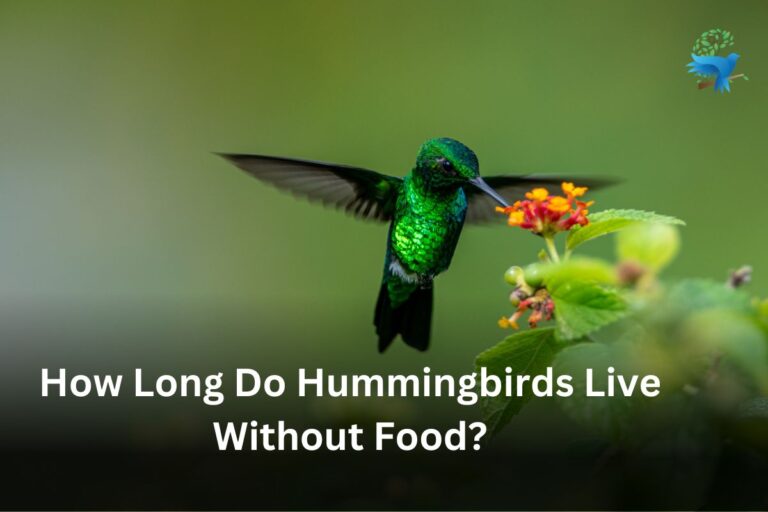HummingBirds in Washington State
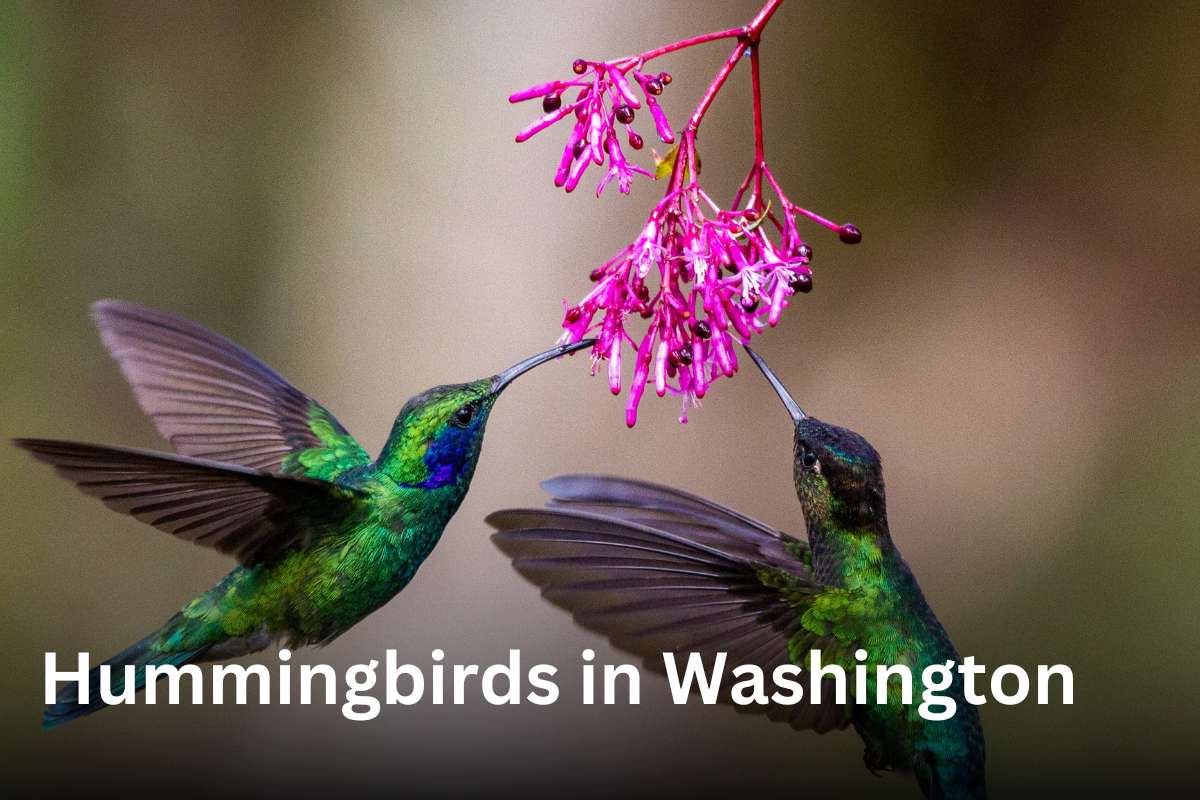
Explore the fascinating world of Washington State hummingbirds, where these little beauties beautify our gardens and woodlands with their fantastic agility and beautiful coloring.
Hummingbirds are among the state’s most intriguing and appealing creatures, even with their small size.
These tiny birds are important pollinators that enhance the area’s biodiversity while enthralling onlookers with their graceful movements and melodic chirps.
These incredible creatures constantly remind us of the exquisite beauty of the natural world and the significance of maintaining its delicate balance in Washington State.
As we delve deeper into the enthralling lives of these magnificent birds, we learn about their challenges and the vital conservation efforts required to maintain their existence in the ever-changing natural environment.
Now, let’s learn more in-depth information on Washington State’s hummingbirds.
List of 4 Humming birds in Washington State
- Anna’s Hummingbird (Calypte Anna)
- Rufous Hummingbird (Selasphorus Rufus)
- Calliope Hummingbird (Selasphorus Calliope)
- Black-chinned Hummingbird (Archilochus Alexandri)
1. Anna’s Hummingbird (Calypte Anna)
The Anna’s hummingbird is a native to North America. Its vibrant plumage and remarkable adaptability distinguish it.
The adult male Anna’s hummingbird is identified by a beautiful rose-red crown and neck, which can occasionally appear black or gold depending on the lighting.
The female, on the other hand, has a more modest appearance. It has simple green upperparts and a dingy gray underbelly, frequently spotted with red dots on the throat.
This species, whose average lifespan is 8.5 years, is steadily growing in population, earning it the classification of Least Concern from conservation organizations.
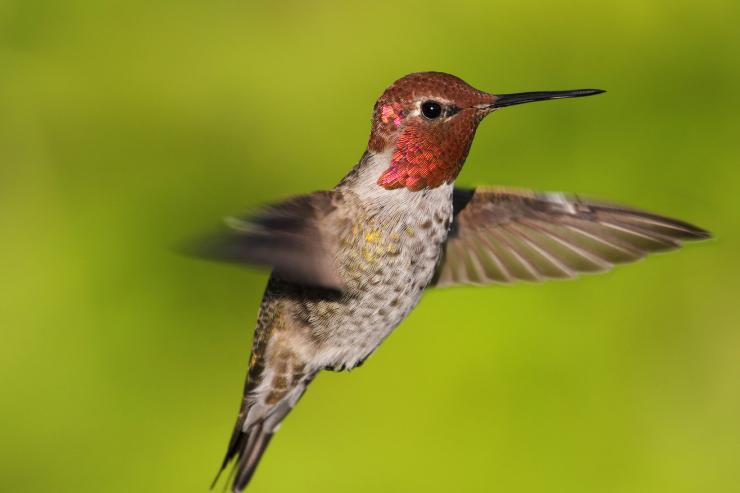
Size, weight, wingspan, life span, and conservation status of Anna’s hummingbird:
- Size: 10 centimeters (3.9 inches)
- Weight: 3.6 grams (0.1 to 0.2 oz)
- Wingspan: 12 centimeters (4.7 inches)
- Life span: 8 to 9 years
- Conservation status: Least concern
Where are they found:
Anna’s hummingbirds are found throughout North America’s western coast, from southern Canada to northern Baja California, and inland to south and central Arizona, extreme southern Nevada, southeastern Utah, and west Texas.
They usually take up permanent residence in their habitat and behave fiercely regarding territory.
Habitat:
Anna’s hummingbird thrives in human-populated places and is especially common along the US West Coast.
It represents the peaceful coexistence of urban and natural settings. The Anna’s hummingbird lives in various habitats, including open forests and gardens.
It is found in many environments, including city parks, coastal sage scrub, and groves beside streams.
Feeding:
The primary food source for Anna’s hummingbird is nectar from a wide variety of plants, though it especially likes species like gooseberries and currants.
| Note: Currant is a dried fruit made from a variety of grapes without seeds. |
2. Rufous Hummingbird (Selasphorus Rufus)
The Rufous hummingbird, a diminutive species known for its exceptional flight capabilities, covers impressive distances of up to 2,000 miles (3,200 kilometers) during migration.
Male rufous hummingbirds exhibit a vibrant appearance, with bright orange plumage on the back and belly complemented by a vivid iridescent-red throat resembling glowing coals.
Conversely, females display green upperparts with rufous-washed flanks, rufous patches in the green tail, and often a touch of orange in the throat.
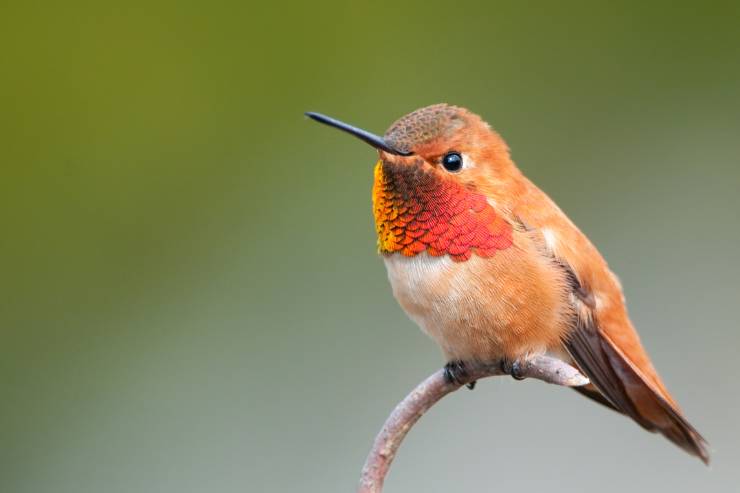
With a lifespan of up to 3–5 years, the species faces challenges as its population declines.
Size, weight, wingspan, life span, and conservation status of Rufous hummingbird:
- Size: 7 to 9 centimeters (2.8 to 3.5 inches)
- Weight: 2 to 5 grams (0.1 to 0.2 oz)
- Wingspan: 11 centimeters (4.3 inches)
- Life span: 3 to 5 years
- Conservation status: Population declining
Where are they found:
Most rufous hummingbirds live in the western Cascades but are also found in the northeastern portion of the state, the eastern Cascades, and the Blue Mountains.
They are usually found above the bottom portion of the Ponderosa pine zone east of Washington.
Habitat:
Rufous hummingbirds can be found in various environments, such as yards, parks, open areas, and woods that get as close to the tree line as possible.
Feeding:
Rufous hummingbirds’ primary source of nutrition is nectar from a wide range of vibrant, tubular flowers.
These include fireweeds, larkspurs, penstemon, currants, heaths, scarlet gilia, columbine, and several species of mints and lilies.
3. Calliope Hummingbird (Selasphorus Calliope)
The calliope hummingbird is the smallest bird. This bird exhibits a compact physique with a short tail and wings barely extending beyond it.
Its relatively thin and brief bill for a hummingbird adds to its distinctive appearance.
Male calliope hummingbirds are characterized by magenta rays on their throat, while males and females feature greenish upper parts.
Also, females and youngster calliope hummingbirds have a peach wash across their underparts, while men have a greenish vest underneath.
According to Partners in Flight data, this species has a lifespan of around 5 to 7 years; the calliope hummingbird faces habitat loss, contributing to slight population declines.
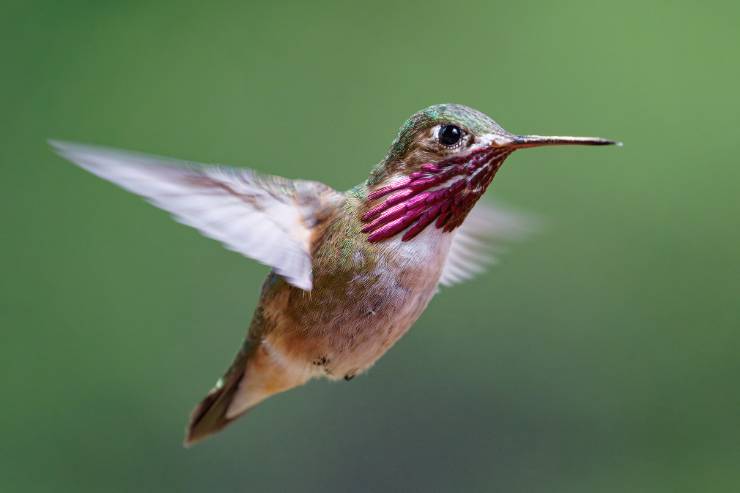
Despite these challenges, the species maintains a stable population and is categorized as of the least Concern, remaining widespread and relatively common.
Size, weight, wingspan, life span, and conservation status of calliope hummingbird:
- Size: 8 to 9 cm (3.1 to 3.5 inches)
- Weight: 2.3 to 3.4 grams (0.08-0.11 oz)
- Wingspan: 10.5 to 11 centimeters (4.1 to 4.3 inches)
- Life span: 5 to 7 years
- Conservation status: Least Concern (However, population declining)
Where are they found:
This bird is native to both the United States and Canada. Its mating region is mainly in the western states, from California to British Columbia.
It migrates to Mexico, Central America, and the Southwest of the United States.
Habitat:
Calliope hummingbirds are frequently seen in clearings, meadows, brushlands, and dry open forests.
Feeding:
Calliope hummingbirds eat insects and nectar. They gather nectar from flowers and add tiny insects to their diet.
| Note: Calliope hummingbirds grab little insects by hovering to pick them from plants or flying out to catch them in flying. |
4. Black-chinned Hummingbird (Archilochus Alexandri)
The black-chinned hummingbird has a dull metallic green hue that characterizes its upperparts, while its underparts appear dull grayish-white.
Male black-chinned hummingbirds feature a velvety black throat with a slender, purple base, whereas females exhibit a lighter throat.
Both males and females display flanks with a dull metallic green gloss.
These hummingbirds can live up to 11 years. The conservation status of the black-chinned hummingbird is categorized as least concern.
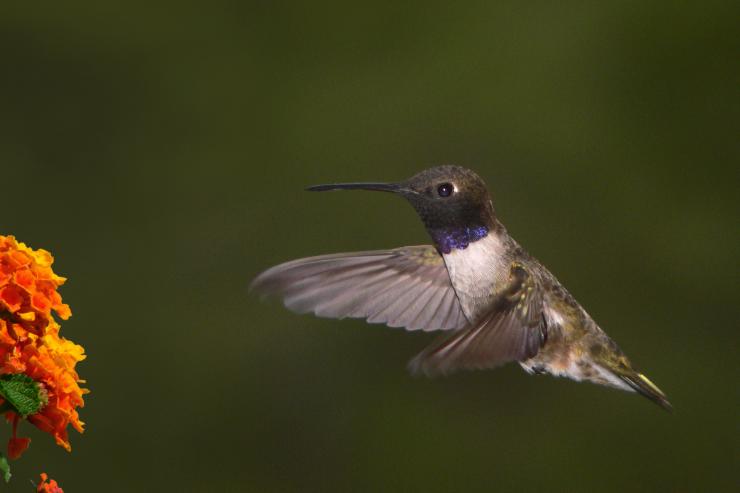
Size, weight, wingspan, life span, and conservation status of Black-chinned Hummingbird:
- Size: 9 centimeters (3.5 inches)
- Weight: 2.3 to 4.9 grams (0.1 to 0.2 oz)
- Wingspan: 11 centimeters (4.3 inches)
- Life span: 11 years
- Conservation status: Least concern
Where are they found:
The black-chinned hummingbird is a hummingbird species inhabiting a wide range of habitats.
It can be found in the western United States and southwestern Canada during the summer months.
This species migrates southward to spend the winter in areas that reach as far south as Mexico.
Habitat:
Black-chinned hummingbirds are common in the desert and pine forests. They are also found in wetlands, riverbanks, and even urban settings.
Remarkably, males of this species are more often found in drier areas than surrounding females.
Feeding:
Black-chinned hummingbirds sustain themselves by consuming nectar from flowers, small insects, and spiders, as well as sugar water from feeders.
They have been observed feeding on diverse nectar-producing plants such as desert honeysuckle, beardtongue, larkspur century-plants, paintbrush, sage, skyrockets, and thistle.
Conclusion
In conclusion, Washington State’s hummingbirds, including the Anna’s, Rufous, Calliope, and Black-chinned, add a vibrant and enchanting dimension to the region’s natural beauty.
While each species possesses unique characteristics and preferences, they all play crucial roles as pollinators, contributing to the ecological balance of their habitats.
However, their existence has been challenging, including habitat loss and environmental changes.
So, by appreciating and protecting Washington State’s hummingbirds, we uphold the beauty of the natural world and safeguard its richness for generations to come.
Frequently Asked Question
How do you attract hummingbirds in Washington state?
Plant various nectar-rich flowers, including fuchsia, trumpet vine, and bee balm, to attract hummingbirds in Washington State. Hang hummingbird feeders, keeping them clean and regularly refilled with a sugar-water combination (4 parts water to 1 part sugar). A variety and plentiful source of nectar will help draw these beautiful birds to your yard.
What is the lifespan of a hummingbird?
In the wild, hummingbirds usually survive three to five years, although certain species can live up to ten years or longer under ideal circumstances.



